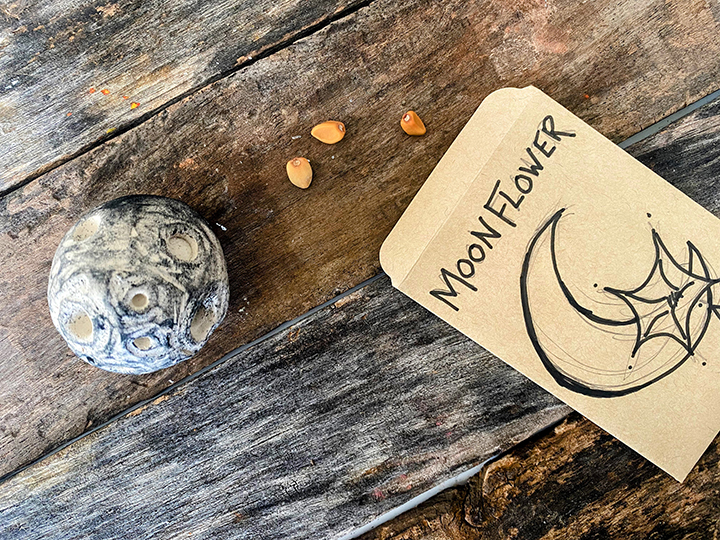
Jonathan Carver is credited as the source of the Worm Moon name, claiming it was a Dakota name. However, every Dakota resource I have found calls this full moon the Sore Eyes Moon, which refers to the glare of the sun off snow. (“Sore Eyes Moon” is how this moon’s name translates from the Lakota and Assiniboine dialects as well.) Allegedly, in the late 1700s, Jonathan Carver wrote that the worms actually refer to larvae that are emerging from winter hideouts around this time.
Where I live in the Mid Atlantic, snow is receding in March, and spring is just starting to peek through. I often think of March as the muddy month. Worms make their first trip to the surface as the ground unfreezes and leave their little piles of worm castings everywhere. Rain, worms and mud are all harbingers of spring, albeit less glamorous than singing birds and delicate flowers, and worm castings are tremendously good for the garden. The mud of spring not only allows things to grow, but it is a tremendous sensory experience for children, and learning about worms is as delightful to children as eating them is to robins.
Some other traditional names include the Creek’s Little Spring Moon and the Passamaquoddy’s Spring Moon. The Hopi people call this the Moon of the Whispering Wind, and the Omaha speak of the “Little Frog Moon,” which feels very appropriate considering all of the amphibian movement and breeding happening around this time. The Ponca tribe calls this the Water Stands in the Ponds Moon, which makes me think of vernal ponds. The Shawnee refer to the Sap Moon, while the Ojibwe observe the Sugar Moon. One of my personal favorites is the Ojibwe Crow Comes Back Moon.
Worm Moon Seed Bombs
If you know me, then you know I have something of a seed bomb obsession, I am always thinking of ideas for seed bomb projects! I think it’s because they combine two of my favorite things- sculpting and gardening. I knew I wanted to use worm castings in this one for the worm moon, and I decided to shape it like a moon too! The worm castings will add extra nutrients and give your seeds a great start in lofe. Moonflowers were then the obvious seed to tuck inside, or any moon garden sort of flowers. You can buy worm castings in the fertilizer section of garden stores, or you can scoop them off the ground. Be sure to tell kids that they are worm poop- they love that stuff!
Materials:
- white air dry clay (make sure it’s non-toxic)
- charcoal
- worm castings
- potting soil
- moonflower seeds
- paintbrush ends or clay tools
Method:
First flatten out a lump of clay into a circle around an 1/8 of an inch thick.
Place some soil and worm castings in the center and tuck a few seeds into the soil.
Fold the edges of the clay up and around the soil, pinch the sides together so that you have a ball of clay surrounding the soil all the way around. You can roll it in your palms shape and smooth it.
Now make some craters! I just used the ends of a few sizes of paintbrushes, you can also use proper clay tools. poke craters all over the moon and draw some lines around them. There is no right way to do this– just make it look moon-y!
Before it dries, flick some charcoal powder onto you moon and rub it in a little. It will add that uneven grey color and texture, but is obviously completely cosmetic and not necessary.
Allow your moon to dry out completely and then throw in someplace you’d like moonflowers to grow! Don’t forget to thank the worms for their help!
